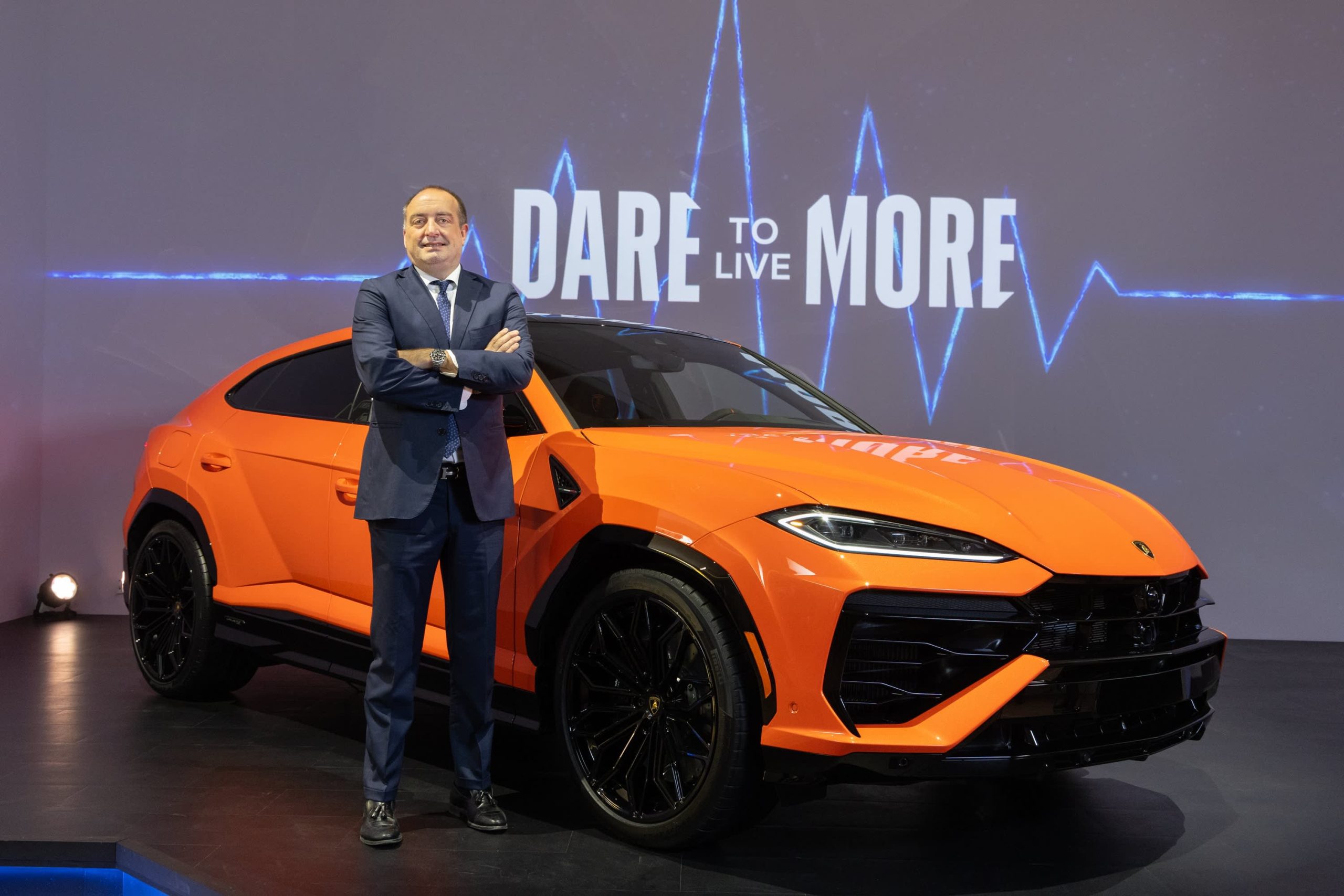Tech That Will Change Your Life In 2021
New ways to work, exercise, see the doctor, watch movies and sanitise every surface in sight will continue to proliferate. So will monthly subscription fees.
A pandemic that ravaged the world and accelerated the digital transformation of, well, everything? Not even the best of futurists or Magic 8 ball-shaking psychics could have predicted the year that was 2020. And yet while we may have missed the biggest news, our predictions for what would occur in the tech world held up decently. (OK, fine, we didn’t think Quibi would die that quickly.)
Now, 2020 has become the lens through which all our 2021 predictions are glimpsed. As we continue to live in a pandemic-fighting world, innovators will aim tech solutions at our personal and professional lives, from at-home streaming movie debuts to an overdue evolutionary leap of the laptop. But we will also strive to reach a new normal, and you’ll see technology helping us there, too, from new hybrid work practices to high-tech masks. And accompanying each new product or service: yet another monthly subscription fee.
Now that we’ve rung in the new year, here’s what to look for.
Pandemic-Inspired Innovation
Masks, webcams and sanitisers for our bodies… and our gadgets. The pandemic sparked a reliance on things our 2019 selves couldn’t ever have imagined. With marketers keen to capitalize on the new interest (and anxiety), 2021 will likely be full of new gizmos that boldly promise to improve it all.
One key area: better webcams for our constant video calling. Samsung has already announced that its forthcoming Galaxy smartphone, expected in early 2021, will improve video recording and calling. We anticipate laptop makers will do the same and finally ditch their crappy, low-resolution webcams.
Portable versions of UV sanitisers for cleaning your phones and gadgets are on the way to keep in your car or your pocket. Another thing we may eventually never leave home without? High-tech masks. Expect a range of built-in features: Bluetooth and microphones (see Maskfone), a fan-powered wearable air purifier (see LG PuriCare), a mask with a UV LED (see the UV Mask). Look for air-quality sensors, contact-tracing assistance and more.
You may even end up wearing a social-distancing sweater. SimpliSafe, a home-security company, made a version that sounds an alarm when someone comes within 6 feet of you. Intended as a fun prototype, the sweater sold out immediately.
Laptops Arm Up
Suddenly, laptops aren’t the most boring gadget in the world. Our reliance on them for at-home work and school spurred demand the category hadn’t seen in years. (“Children, let me tell you about the Great Chromebook Shortage of 2020.”) Then, in November, Apple released a MacBook Air and MacBook Pro that ditched Intel inside for Apple’s own M1 chips. The result? Machines that have never been so quiet and cool, and lasted so long on one charge.
The move from chips based on Intel’s x86 architecture to ones based on lower-powered Arm technology, like the ones inside phones, is setting the entire computing industry on a new course. Lenovo, Acer and Microsoft have begun releasing Windows or Chrome OS laptops with chips from Qualcomm, whose processors power the most popular Android phones. This will only accelerate in the coming year, with nearly every major Windows PC maker working with Qualcomm on laptops and some models even gaining 5G, said Qualcomm President Cristiano Amon.
Apple, which plans to transition its entire Mac lineup to its own processors by 2022, is also expected to release a long-anticipated new iMac, among other things. And it won’t come as a surprise when more tech giants, including Amazon and Microsoft, embrace their own custom chips in everything from laptops to servers to wearables.
Hollywood at Home
Many of this year’s top films are hitting living rooms at the same time as theatres. Yep, that means watching “Dune” opening weekend in your PJs. (Woohoo!)
In April, Universal Pictures made “Trolls World Tour” an online rental as theatres closed. Unexpectedly, it broke digital records, racking up US$100 million through platforms such as Apple TV. Then Disney made a big bet on “Mulan,” launching the title on the company’s Disney+ streaming service for an additional $30 a pop. Following the Christmas release of “Wonder Woman 1984” to all HBO Max subscribers (with no extra fees), WarnerMedia plans to release its entire 2021 slate on the online platform.
Netflix has long adhered to this model, and now Hollywood is catching on, more out of necessity than out of desire. AMC reported attendance is down 85% year over year and Regal Cinemas, the second-largest theatre chain in the U.S., closed all of its locations nationwide.
The director of “Dune,” slated for an HBO Max debut in the fall, wrote a scathing op-ed about how streaming alone can’t sustain the film industry. Yet the studios’ digitally minded parent companies, including Comcast, AT&T and Disney, might disagree, finding themselves in possession of the primary distribution channel for their content—and the valuable proprietary viewer data that comes with it.
Reality: Assisted, Not Augmented
When will Apple release a pair of smart glasses? Probably not 2021. And while Google made a big step in this category this summer by acquiring North, a pioneer in projection glasses, it cancelled the second version of North’s glasses as it plots its future. It’s actually Facebook that declared it will launch smart glasses in 2021—and they’ll be Ray Bans.
Facebook Chief Executive Mark Zuckerberg said in September these glasses will be “the next step on the road to augmented reality.” They won’t feature virtual objects that appear to interact with the real world. AR headsets like Microsoft’s HoloLens might deliver an immersive experience, but they’re still expensive and cumbersome.
“Assisted reality” glasses—which project text, images and even video feeds into a person’s field of view—are of more value now, says Brian Ballard, CEO of remote-expertise company Upskill. Businesses have found utility in remote video conferencing that hovers in workers’ field of view, or turn-by-turn directions they don’t have to look down to follow.
More Remote Workouts… and Doctor Visits
At-home health is here to stay. Downloads of health and fitness apps grew by 46% world-wide in the first half of 2020, according to MoEngage, a marketing research firm.
Connected fitness equipment, once considered a pricey extravagance, turned into a no-brainer as gyms closed. Peloton, which makes smart spin bikes and treadmills, said it tripled its revenue in the quarter ending in September. Lululemon Athletica acquired Mirror, a wall-mounted panel that streams fitness classes, in June.
Doctor checkups are changing, too. Hospitals used phone, interactive video and messaging to minimise contact with coronavirus patients, after fast-tracking new telemedicine systems. In March, federal authorities loosened health privacy regulation to allow health-care providers to facilitate visits over FaceTime, Facebook Messenger, Zoom or Skype.
PlushCare, a virtual primary care provider, saw a 460% increase in patient signups this year. Ryan McQuaid, the company’s CEO, doesn’t think the bump is a short-term response to a crisis, citing the time-consuming nature of in-person visits. “On average, Americans spend over 20 minutes in the waiting room alone,” he said.
E-commerce ≠ Amazon
The pandemic packed 10 years of consumer e-commerce adoption into a single quarter, and forced every company that wasn’t Amazon—especially those with large retail footprints—to scramble to offer consumers new and better ways to shop from home.
Target saw an explosion in kerbside pickup from online orders, while warehouse retailer Costco reported unprecedented growth in e-commerce. Walmart launched a Prime-like membership program called Walmart+, and rapidly added features to keep up the competition. (Walmart recently eliminated order minimums and shipping fees on Walmart.com orders, and provides no-fee delivery on grocery carts totalling US$35 or more.) Shopify, which powers payments for many small businesses online, expanded its own network of fulfilment centres so those businesses could get goods to customers more quickly and efficiently, without turning to Amazon.
Now that fast, free shipping is table stakes and retailers recognize they won’t see the foot traffic they counted on pre-pandemic, consumers finally get an online version of an old retail staple: comparison shopping. In 2021, Amazon’s value proposition—that if it isn’t always the least expensive way to shop, it’s at least the most convenient—will be tested. Meanwhile, its market power—along with Google’s, Facebook’s and Apple’s—will continue to be the focus of regulatory scrutiny.
Death by Subscription
Everything now has some sort of subscription attached to it. Your 600 video streaming apps, your grocery-delivery service, your cloud storage, certainly, but also your workout bike? Your to-do list app? Your dog food? Everything as a Service (EaaS), as we like to call it, is only going to continue. More things you once bought as a one-time payment will be offered instead as a recurring payment. And expect new sorts of service-focused offerings, too—especially tied to your hardware purchases. If Apple’s Fitness+—a new digital workout subscription that requires an Apple Watch—is successful, Apple and other hardware makers will likely attach more services to their products.
Those subscriptions you’re already paying for will continue to rise. Companies argue you need to pay more so they can add more content and features. In June, YouTube TV raised its cable-like bundle by US$15. In October, Netflix raised its most popular streaming plan from US$12.99 to US$13.99. In November, Google eliminated its free Google Photos storage tier. And Disney announced that in March, the monthly price of Disney+ will go from $6.99 to $7.99.
Return of the Trust Fall
While remote work has many advantages, building trust between employees isn’t one of them. Online, there is no water cooler, no nearby coffee shop for informal brainstorms, no place to grab a drink after work. But companies whose employees worked remotely long before the pandemic already had a solution: the off-site retreat.
Buffer, a fully remote company, gets its entire, globe-spanning team together at least once a year. Dozens of other companies whose employees work mostly or entirely at home do the same thing, which has led to a cottage industry of firms that will plan these retreats for you.
One reason companies have embraced remote work is that it makes employees happier, but another is that it saves companies money on office space. In 2021, expect to see many of the millions of employees who have permanently shifted to remote or hybrid work piling into party buses, doing group yoga and seeking inner peace in the presence of their bosses—for far less than the cost of the rent on the offices they left behind.
EV, American Style
Look, electric vehicles are cool, but few bear any resemblance to good old Detroit steel. That changes in 2021 with the anticipated arrival of some green beasts.
This summer, startup Rivian expects to ship the already-sold-out launch editions of its first-generation R1T pickup and R1S SUV, machines with ranges of over 300 miles and price tags starting around $70,000.
Then there’s the GMC Hummer EV pickup, due in the fall from General Motors. Reservations are already full for the $112,595-and-up Edition 1, which is billed to have a range of over 350 miles and can do zero-to-60 in about 3 seconds. Lower-tier trims will be available in subsequent years, though true to form, the prices will stay on the big side.
Ford expects to have its own battery-powered monster, the F-150 Electric, on sale in mid-2022. Back in pre-pandemic times, the company filmed a prototype towing over a million pounds. And sometime in late 2021 or early 2022, we might even see Tesla’s Cybertruck.
Those may be the biggest consumer vehicles coming to market, but they’re not the only ones working to up the EV’s average size. This past year brought battery-powered SUVs from the likes of Toyota, Audi and Jaguar, and the trend will continue: In 2021, more than half of the battery-electric and plug-in hybrid options on the U.S. market will be SUVs—82 models total, as opposed to 66 passenger-car models, according to forecasts by AlixPartners, a global consulting firm.
 Copyright 2020, Dow Jones & Company, Inc. All Rights Reserved Worldwide. LEARN MORE
Copyright 2020, Dow Jones & Company, Inc. All Rights Reserved Worldwide. LEARN MORE
This stylish family home combines a classic palette and finishes with a flexible floorplan
Just 55 minutes from Sydney, make this your creative getaway located in the majestic Hawkesbury region.
The marketplace has spoken and, at least for now, it’s showing preference for hybrids and plug-in hybrids (PHEVs) over battery electrics. That makes Toyota’s foot dragging on EVs (and full speed ahead on hybrids) look fairly wise, though the timeline along a bumpy road still gets us to full electrification by 2035.
Italian supercar producer Lamborghini, in business since 1963, is also proceeding, incrementally, toward battery power. In an interview, Federico Foschini , Lamborghini’s chief global marketing and sales officer, talked about the new Urus SE plug-in hybrid the company showed at its lounge in New York on Monday.

Lamborghini
The Urus SE SUV will sell for US$258,000 in the U.S. (the company’s biggest market) when it goes on sale internationally in the first quarter of 2025, Foschini says.
“We’re using the contribution from the electric motor and battery to not only lower emissions but also to boost performance,” he says. “Next year, all three of our models [the others are the Revuelto, a PHEV from launch, and the continuation of the Huracán] will be available as PHEVs.”
The Euro-spec Urus SE will have a stated 37 miles of electric-only range, thanks to a 192-horsepower electric motor and a 25.9-kilowatt-hour battery, but that distance will probably be less in stricter U.S. federal testing. In electric mode, the SE can reach 81 miles per hour. With the 4-litre 620-horsepower twin-turbo V8 engine engaged, the picture is quite different. With 789 horsepower and 701 pound-feet of torque on tap, the SE—as big as it is—can reach 62 mph in 3.4 seconds and attain 193 mph. It’s marginally faster than the Urus S, but also slightly under the cutting-edge Urus Performante model. Lamborghini says the SE reduces emissions by 80% compared to a standard Urus.
Lamborghini’s Urus plans are a little complicated. The company’s order books are full through 2025, but after that it plans to ditch the S and Performante models and produce only the SE. That’s only for a year, however, because the all-electric Urus should arrive by 2029.

Lamborghini
Thanks to the electric motor, the Urus SE offers all-wheel drive. The motor is situated inside the eight-speed automatic transmission, and it acts as a booster for the V8 but it can also drive the wheels on its own. The electric torque-vectoring system distributes power to the wheels that need it for improved cornering. The Urus SE has six driving modes, with variations that give a total of 11 performance options. There are carbon ceramic brakes front and rear.
To distinguish it, the Urus SE gets a new “floating” hood design and a new grille, headlights with matrix LED technology and a new lighting signature, and a redesigned bumper. There are more than 100 bodywork styling options, and 47 interior color combinations, with four embroidery types. The rear liftgate has also been restyled, with lights that connect the tail light clusters. The rear diffuser was redesigned to give 35% more downforce (compared to the Urus S) and keep the car on the road.
The Urus represents about 60% of U.S. Lamborghini sales, Foschini says, and in the early years 80% of buyers were new to the brand. Now it’s down to 70%because, as Foschini says, some happy Urus owners have upgraded to the Performante model. Lamborghini sold 3,000 cars last year in the U.S., where it has 44 dealers. Global sales were 10,112, the first time the marque went into five figures.
The average Urus buyer is 45 years old, though it’s 10 years younger in China and 10 years older in Japan. Only 10% are women, though that percentage is increasing.
“The customer base is widening, thanks to the broad appeal of the Urus—it’s a very usable car,” Foschini says. “The new buyers are successful in business, appreciate the technology, the performance, the unconventional design, and the fun-to-drive nature of the Urus.”
Maserati has two SUVs in its lineup, the Levante and the smaller Grecale. But Foschini says Lamborghini has no such plans. “A smaller SUV is not consistent with the positioning of our brand,” he says. “It’s not what we need in our portfolio now.”
It’s unclear exactly when Lamborghini will become an all-battery-electric brand. Foschini says that the Italian automaker is working with Volkswagen Group partner Porsche on e-fuel, synthetic and renewably made gasoline that could presumably extend the brand’s internal-combustion identity. But now, e-fuel is very expensive to make as it relies on wind power and captured carbon dioxide.
During Monterey Car Week in 2023, Lamborghini showed the Lanzador , a 2+2 electric concept car with high ground clearance that is headed for production. “This is the right electric vehicle for us,” Foschini says. “And the production version will look better than the concept.” The Lanzador, Lamborghini’s fourth model, should arrive in 2028.
This stylish family home combines a classic palette and finishes with a flexible floorplan
Consumers are going to gravitate toward applications powered by the buzzy new technology, analyst Michael Wolf predicts























